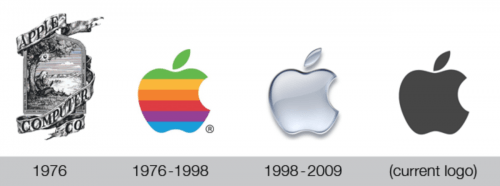accounting period
the time for which profits are being calculated, normally months, quarters or years.
accounts
businesses are obligated to produce an annual set of accounts. if they are listed on the stock exchange, they must also show half-year profits (information regarding profits six months into the financial year).
accounts payable
amounts of money owed by your company to external suppliers.
accounts receivable
money owed to your company by customers.
acquisition
the purchase of one company or resources by another.
actuary
an actuary is a person employed by pension providers and insurance companies. their role is to calculate accident rates, life expectancy and the relevant payouts.
administration
there are two meanings relating to this word in business.
(1) the organisation and running of a business.
(2) a business going into administration, meaning that a business has gone bankrupt and its creditors can get in touch to try and claim any money they are owed.
affiliate marketing
a retailer or service provider advertising its goods or services via a third party in return for a commission on any sales.
annual equivalent rate (AER)
a quote of what interest paid on savings and investments would be. it is calculated by adding each interest payment to the original deposit, then working out the next interest payment, compounding the interest.
annual percentage rate (apr)
this is the rate of interest you agree to pay on money borrowed. the higher the amount, the more you will pay.
annuity
this is a type of insurance policy. upon retirement a lump sum is paid into it and the insurance company then provide a regular income.
arbitrage
the process by which a person or business takes advantage of the difference in price of a share or a currency.
assets
property that has value owned by a company.
audit
an official inspection of a company’s, or individual’s, accounts.
b2b
business to business.
b2c
business to consumer.
balance sheet
a ‘snapshot’ of a company’s assets, liabilities and capital at a particular point in time.
base rate
set each month by the bank of england, this is the country’s base rate of interest. This influences financial products and services when they set their own cost of borrowing.
benchmarking
checking your company’s standards by comparing them with certain criteria, e.g. a competitor’s activities.
bid-offer spread
the buying (offer) and selling (bid) price of shares, bonds or currency. the ‘spread’ is the difference between those two prices.
black swan
financial events that are difficult to predict. It is called this because before people ventured to Australia, swans were assumed to only be white. No one had seen a black one until then.
blue chip
this term originates from poker as blue chips are traditionally the highest-valued. therefore, a blue-chip company is one that is large and considered to be safe or prestigious.
bond
an agreement made when money is borrowed from an investor at a set rate of interest. it is repaid over a set period of time. bonds are rated from the safest (aaa) to the riskiest (d), also known as ‘junk bonds’.
bootstrapping
(1) building a start-up company with very little money, often relying on personal savings and pushing for the lowest possible operating costs, while implementing cost-saving systems such as fast inventory turnaround.
(2) making a forecast beyond a certain period by using the forecasted data for that period.
break-even point
the point in time when you will have paid back all your debts, or when revenues exactly match expenses.
bridging loan
this loan is taken out by people who need access to finance while their property is being sold.
business angel
also known as an angel investor. an individual who provides capital for a business start-up in return for a stake in the company.
business cycle
the tendency for economies to experience peaks and troughs that follows a cyclical pattern – known colloquially as ‘boom and bust’. Governments are tasked with smoothing the peaks and troughs and limiting the effect of these cycles on consumers and businesses.
capital
money invested into a company or project by its owners.
capital expenditure (capex)
money spent to create future benefits. capital expenditure is money spent by a company either to buy fixed assets or to add to the value of existing fixed assets with a useful life that extends beyond the taxable year. With regard to tax, capital expenditure cannot be deducted in the year the money is paid. Compare with operating expenditure (opex), which refers to ongoing costs to run a product, service or system.
cash flow
the movement of cash into and out of a business.
collateral
collateral is something lenders can use to give security against a loan. often this is a major asset such as a house.
commodity
this is any item which can be freely bought and sold. examples include gold, food products and coffee beans.
copyright
the exclusive legal right, owned by the individual or group who created a work, or by an individual or group assigned by the originator, to use certain material and to allow others the right to use the material.
corporate social responsibility
corporate social responsibility (CSR) is a form of self-regulation, where companies integrate social, environmental and ethical policies into their overall business strategy. Companies embracing CSR should take responsibility for their actions and take a proactive approach to having a minimal negative impact on the world.
creditor
a person or firm that has lent your business money or to whom you owe money.
critical success factor
a critical success factor is an element that must occur in order for a business to achieve its ultimate goal.
debtor
a person or firm that owes money to you or your business.
depreciation
the reduction in value of assets over time, usually due to wear and tear.
diversification
when new products, services, customers or markets are added to your company’s portfolio. diversification usually occurs as a risk reduction strategy.
dividend
money paid regularly by a company to its shareholders.
economic growth
this is the term used to describe an increase in the amount of goods and services produced by the county, known as gross domestic product (GDP).
economies of scale
the cost advantages obtained by a business when buying an item in bulk. the price of an item usually decreases as the amount bought increases.
enterprise value
this is the market value of a business. it is calculated by market capitalisation times current share price, minus cash, plus debt.
equity
equity is used by analysts to work out how financially “healthy” a company is. it also represents what would be left if all of a businesses’ assets were liquidated and the debt paid off.
ethical investment
investments made in companies that are specifically chosen for their environmental or moral credentials. defence contractors, or companies known to use contentious labour practices, will generally be avoided by ethical investors.
ethical trade
ethical trade can refer to many different things but is most often used as an umbrella term for any business practices that promote socially and/or environmentally responsible trading.
exit strategy
a plan to enable you to leave your business, either after achieving your goal or deciding you would like to move on to do something else while recouping any capital you invested when starting the company.
export
selling your goods or services overseas.
fairtrade
an organised movement enabling producers in developing countries to receive a fair price for the items they produce. fairtrade certification is becoming much more common in many sectors, particularly food, with several large brands now stating that their products are ‘certified fairtrade’ on their packaging.
financial management
planning, analysing, monitoring, organising, reviewing and controlling an organisation’s monetary resources. responsibility for financial management often falls to the finance director, and by extension the financial department.
fiscal year
also known as a financial year, the fiscal year is a set period used to calculate financial statements. The period used differs between countries and between businesses, although in the UK the year between 6th April and 5th April is most often used for personal taxation. the ‘official’ period for corporation tax runs from 1st April to 31st March, however companies can adopt any yearly period for corporation tax.
fixed cost
any cost that remains the same in the short-term, despite changes in volume. fixed costs usually include, for example, rent, interest and salaries.
FTSE 100 index
this list is made up of the 100 most highly capitalised blue-chip companies on the London Stock Exchange.
futures
these are financial contracts that secure a predetermined future date and price for an asset. the assets used in futures contracts include commodities, stocks, and bonds.
golden hello
an attractive package (typically a bonus, or stock options) that are offered to a senior employee as an incentive to join the company.
golden share
a golden share in a company is able to outvote all other shares in a specified circumstance.
grey knight
during a business takeover, this is a bidder who has no clearly stated intentions.
gross
the total amount of money you have earned in a period of time before deductions such as taxes.
gross domestic product (GDP)
GDP is the sum of all goods and services produced in the country’s economy. if it is up on the previous three months, the economy is growing. If gdp is down, the economy is contracting.
gross national product (GNP)
GNP is another way to measure the economy, but also the welfare of British citizens. this is GDP plus the profits, interest and dividends received from British residents abroad and minus those profits, interest and dividends paid from the UK to overseas residents.
half year
this is a term used to describe six months into the financial year when British listed companies must produce profit figures.
hedge funds
these investments are only open to professional investors, pension funds and insurance companies. They are considered risky bets although their aim is to beat falling markets. There are four main types of hedge fund:
- market-neutral or relative value. these attempt to exploit market inefficiencies.
- event-driven. invested on anticipated mergers, bankruptcy or corporate reorganisations.
- long/short. allow fund managers to buy some assets but sell others they do not yet own.
- tactical trading. speculation on the future direction of markets.
horizontal merger
when two companies within the same industry and at the same stage in production merge together.
hostile takeover
this is a takeover bid of a company that is deemed unacceptable or has unwelcome terms as deemed by the company’s board.
hyperinflation
this is inflation that is rapid or out of control. it usually only occurs during wars or during severe political instability.
import
buying goods or services from overseas and bringing them into the country.
income statement
determines the net income/profit of a business. an annual summary of both income and expenses.
industrial output
this is an indicator of future economic growth as it is the manufacturing output of the nation.
inflation
the term used when prices rise.
insider trading
the trading of shares based on knowledge that no one else has. it was made illegal in the uk in 1980.
insolvency
when a company becomes unable to pay off its creditors, or its liabilities exceed its assets.
institutional investor
a professional money manager who works for private investors and invests via pension and life insurance funds.
intellectual property
any works or inventions that are original creative designs. the individual or company responsible for the designs will be entitled to apply for a copyright or trademark on the designs.
interim profit statement
this updates shareholders on a company’s unaudited profits for the first half of the financial year.
investment trust
a company on the stock exchange that only invests in other companies.
invoice factoring
invoice factoring involves a business selling its invoices on to a third party, who will then add their own fee to the charges and seek the money from the debtor.
key performance indicator
a key performance indicator (KPI) is a measure of performance to assess the success of a company or a certain activity the company is taking part in.
leveraged buyout
when a company is acquired using borrowed funds. the debt is usually repaid by money made by the acquired company.
libor rate
LIBOR stands for the London Interbank Offered Rate and provides the average interest rate at which major global banks borrow from one another. it is based on five currencies:
- US dollar
- euro
- British pound
- Japanese yen
- Swiss franc
LIBOR is also the basis for consumer loans in countries worldwide. It impacts both consumers and financial institutions.
liquid asset
any asset which can be easily converted into cash.
liquidity
the ease with which a company’s assets can be converted into cash.
macro-economics
this is a part of economics that seeks to simplify and show the progress of whole economies rather than focus on individuals or groups (which is micro-economics).
managed fund
there are two ways in which a fund can be controlled:
- actively. a fund manager buys and sells to maximise gains and minimise losses.
- passively. a computer programme tracks the performance of a market.
margin
a profit margin is how much money a company made. for example, a gross profit of £1m on sales of £10m is a 10% profit margin. companies can compare profit margins with others to see how they are doing.
market segmentation
a market segment is a division of a market with similar characteristics (e.g. age, gender, religion) that cause them to demand similar products and/or services. For example, in an area with a large jewish community, kosher foods are likely to be in greater demand.
market share
the percentage or portion of the overall market controlled by one company.
marketing mix
the combination of marketing elements used by a company to encourage consumers to purchase its product or service. Also known as the seven P’s: product, price, promotion, place, people, process, physical evidence.
merger
when two or more companies are combined into one.
microeconomics
this is a part of economics that concentrates on the actions of individuals and groups, rather than of whole economies (which is macroeconomics).
national insurance
national insurance is a form of tax which everyone currently employed must pay in order to qualify for benefits, including the state pension.
negative equity
when the value of an asset you have already bought becomes worth less than what you initially paid.
net
the amount of profit remaining after deductions such as tax have been made.
net asset value
a way of measuring investment trusts. take the total number of its assets minus its liabilities.
niesr
national institute of economic and social research.
nominal interest rate
an interest rate that isn’t adjusted for inflation.
nominal values
these values do not take inflation into account.
non-executive director
this is a director who helps the company and offers an independent view on strategies and performance but is not actively involved in the day-to-day running.
offshore account
funds which are managed outside of the uk.
oligopoly
a market where only a few firms control the percentage of total sales.
operating expenditure (opex)
on-going costs for running a business, service or system that includes day-to-day expenditure such as sales and administration. Compare with capital expenditure, which is money spent on fixed assets or extensions to already-owned fixed assets. a photocopier, for example, would involve capital expenditure whereas toner and paper for the photocopier would be operating expenditure.
operating profit/loss
the profit or loss a company makes. these figures reflect how the business is performing.
ordinary share
also known as common shares, this is one unit of a businesses share capital.
overheads
costs that do not vary regardless of the level of production and are not usually directly involved with the cost of production, such as rent.
patent
an official legal document confirming that an individual or company has the sole right to make, use or sell a particular invention.
paye
pay as you earn. a method of collecting income tax on behalf of the government by taking it directly from your employees’ weekly/monthly pay.
philanthropy
making donations to charities in order to improve human wellbeing.
present value
comparison of the money available to the company in the future with the value of money it currently holds, e.g. due to interest.
private limited company
a type of legal company structure that, among other features, limits the personal liability of the company owners so that they can’t be made bankrupt by company debts.
privatisation
the process of moving state-owned assets into the private sector.
producer price index
a measure of inflation in goods bought and manufactured by british-based industry.
product elasticity of demand (PED)
the degree to which demand for products or services changes with the price. Essential goods, such as food, do not experience an increase in demand when the price changes, and are deemed “inelastic”, but non-essential goods do.
profit and loss account
a financial statement that shows any incomes or outgoings of a company over a certain period of time so as to show the net profit or loss for that time.
quantitative easing
this is a policy used by authorities in extreme circumstances to ease pressure placed on banks. The authorities buy bonds from the banks and from the commercial sector to make sure banks have enough cash to continue operating.
quota
this is a limit set by a government on how much of a product can be imported and exported.
rate of return
this is represented as a percentage and is the annual income an investment makes back.
real interest rate
the rate of interest minus the current rate of inflation.
real values
real values show how relative particular prices are to prices in general. they are adjusted according to inflation.
recession
a period of severe economic decline. defined by a contraction of gdp for six months or longer.
return on investment
the earning power of an asset or activity measured as a ratio of the net income of the activity to the operational cost. Return on investment (ROI) lets a company know whether an activity is profitable enough to continue.
revenue
amounts of money received by (or owed to) a company for goods or services provided.
share index
tracks the value of shares on the exchange to demonstrate their performance.
share options
a right to buy shares in a company in the future, at a favourable price, in addition to a regular salary if the person meets specific performance targets or predetermined criteria.
shareholder
an owner of shares in a company.
smes
small and medium-sized enterprises. a small business has fewer than 50 staff and a medium-sized business has fewer than 250 staff. micro-businesses, with fewer than 10 staff, would also come under the term ‘SME’.
social enterprise
social mission driven businesses, with social and/or environmental aims, that use market-based strategies to achieve their goals. Social enterprises can be both non-profit and for-profit.
stakeholders
any individual or party that has an interest in or may be affected by a business and/or its activities. This can include anyone, from shareholders to residents of the local community.
supply chain
the different elements making up the process involved in producing and distributing an item or items.
sustainability
the use of natural resources with a minimal impact on the environment; e.g. no depletion of resources. For example, a company that manufactured paper would be sustainable if it only made 100 percent recycled paper or planted a new tree for each one it cut down.
takeover
the buying out of one company by another.
trade balance
only taking visible trade into account (the import and export of physical goods) the trade balance shows a county’s trade position.
trademark
a logo, brand name or phrase legally registered by one company to represent them.
triple bottom line
people, planet, profit. the bottom line was originally considered as just profit. In recent years, with the growth in popularity of corporate social responsibility, businesses are increasingly measuring project success not only in monetary terms, but also by examining their social and environmental performance.
turnover
the total sales of a business or company during a specified period.
unit trust
a unit trust invests money in the stock market on behalf of a group of private investors that have put all their money together to invest and be managed by a fund manager.
unquoted shares
some companies choose to not be listed on the stock market, or they may not meet the listing requirements. therefore the shares are ‘unquoted’.
venture capital
capital invested into projects with higher risks, usually start-up businesses.
vertical merger
a merger between companies that are in the same industry but are not at the same production stage. For example, if a car manufacturer buys a tyre company. they are part of the car manufacturing industry, but now the car maker can reduce the cost of tyres.
volume
the number of shares traded in a day on the london stock exchange.
without-profits policy
an insurance policy that does not share in the profits of the business that issued it.
working capital
this is the capital a business uses in its day-to-day trading. it’s the difference between current assets and current liabilities. It provides an indication of liquidity and the businesses ability to meet its current obligations.
work-life balance
the balance in demands of both life at work and personal life.
yield
the income from an investment. calculated by taking the annual dividend or interest payment, multiplying by 100 and dividing by the current market price.
zombie funds
more formally these are called closed funds. it’s a name given to a closed with-profits fund that no longer accepts new business until the existing policies mature.
There are many more terms, if you’d like to contribute to this page, please get in touch.














